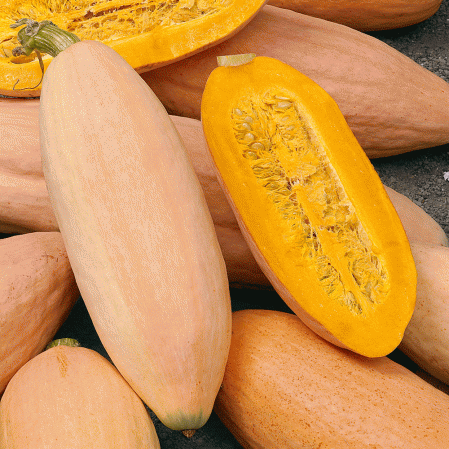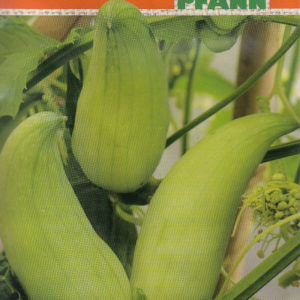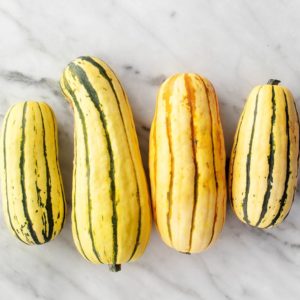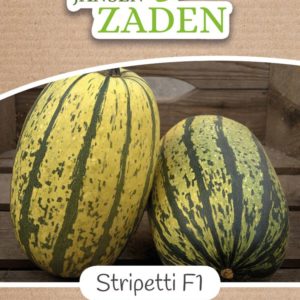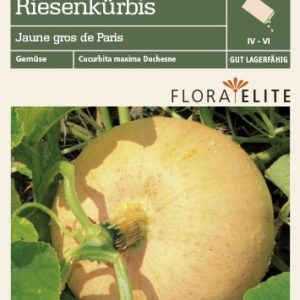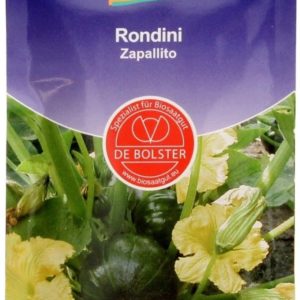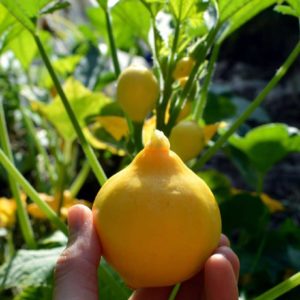قرع وردي
1,750 د.ك
C. maxima. Not well known today, these heirloom Pink Banana Jumbo pumpkin seeds have been around for over 100 years. The hard, smooth, deep-pink skin covers a solid, fibreless flesh that makes beautiful pies. Pick when less than 80cm (30″) for eating, or grow to the full 75 lb size, over 120cm (48″) long. This pumpkin has a vining habit, and plants get big, so provide lots of room. You’ll be rewarded with two to three spectacular oddball pumpkins per plant. These are terrific storage pumpkins, and will last all winter if kept in a cool, dark place. Give the outside of the skins a quick rinse with a diluted solution of water with a few drops of bleach. This will kill off any bacteria, and increase the shelf life of these special fruits.
Matures in 105 days. (Open-pollinated seeds)
- Hard, smooth, deep-pink skin
- Fibreless flesh makes beautiful pies
- Been around for over 100 years
- Open-pollinated seeds
- Matures in 105 days
Latin
Cucurbita maxima & C. pepo.
Family: Cucurbitaceae
Difficulty
Easy, but these big plants require lots of room.
Season & Zone
Season: Warm season
Exposure: Full sun
Zone: Not winter hardy. Compare the days to maturity to the length of a typical summer in your area. Days to maturity are from transplant date.
Timing
Direct sow or transplant in late May or early June when soil warms up. For transplants, start seeds indoors during the first two weeks of May. Make sure plants go into the ground no later than June 15th. Optimal soil temperature for germination: 25-35°C (68-95°F). Seeds should sprout in 7-14 days.
Starting
Sow seeds 2cm (1″) deep. Sow 3 seeds in each spot you want a plant to grow and thin to the strongest plant. Space plants at a minimum of 90-120cm (36-48″) apart in rows 120-180cm (48-72″) apart. If starting transplants indoors, consider using the 12-cell plug inserts.
Growing
Ideal pH: 6.0-6.8. These big plants need lots of food! Choose a sunny spot with fertile, well-draining soil. Dig in a generous quantity of finished compost and/or composted manure. Dig in 1 cup of complete organic fertilizer under each plant. All pumpkins grow male flowers first, then the female flowers are produced. The female flowers have tiny fruits at the base of the petals and require pollination by bees, mostly. Incomplete pollination is common at the beginning of the season, and results in small fruits that are misshapen at the flower end. Discard these damaged fruits before they rot.
For the largest pumpkins, feed weekly throughout the growing season with fish or kelp based fertilizer. Keep the huge plants well watered, particularly in hot weather. Always water the soil, and avoid any form of overhead watering other than rain. Fruit will grow larger if you keep only one fruit per vine. As the fruit develops, try to gently encourage it to grow at a 90° angle to the vine itself. The largest pumpkin varieties will grow on their sides.
Harvest
Like other winter squash, pumpkins are mature when they have coloured up well and their stems are crisp. For the best sugar content, cut the stem about 4cm (2″) or so from the body of the fruit. If the weather is dry, allow the pumpkins to cure in the field for 10 days, or in a warm room for 4-5 days. Bring pumpkins in under cover before rain.
Seed Info
In optimal conditions at least 80% of seeds will germinate. Usual seed life: 2 years. Per 100′ row: 60 seeds, per acre: 6.5M seeds.
Diseases & Pests
Powdery Mildew: An airborne fungal disease that causes white spots on the leaves at the end of the season. Several home-sprays are said to be somewhat effective. Spray any of the following at 7-10 day intervals. 1tsp baking soda and 1 quart of water with a squirt of dish soap, or 1 part milk to 9 parts of water. You can add a little Kelpman to the mix. Resistant varieties get the mildew just a few days later than the other varieties.
غير متوفر في المخزون


